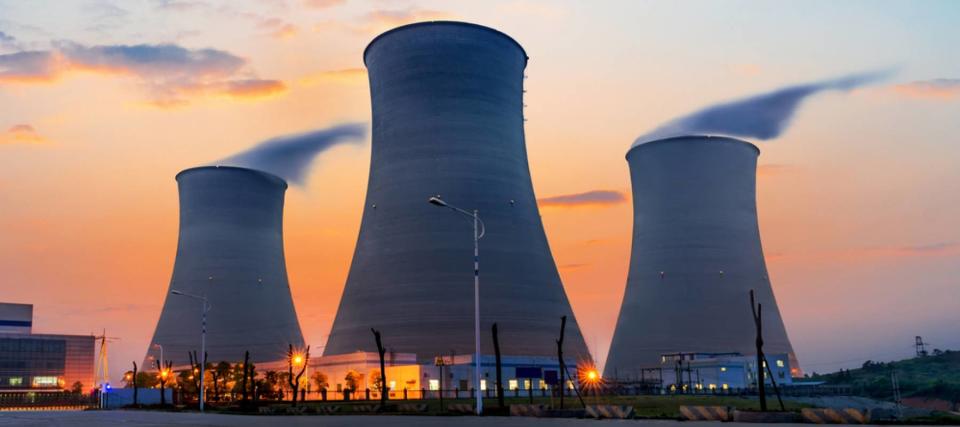A new nuclear reactor in the US started up in March — the country's first in almost 7 years. Here are 3 simple ways to invest in the space

Nuclear power has its pros and cons. Right now, the U.S. seems to be embracing its advantages.
In March, Georgia Power announced that its Vogtle Unit 3 reactor has safely reached 'initial criticality.'
Don't miss
Rich young Americans have lost confidence in the stock market — and are betting on these 3 assets instead. Get in now for strong long-term tailwinds
You could be the landlord of Walmart, Whole Foods and CVS (and collect fat grocery store-anchored income on a quarterly basis)
Worried about the economy? Answer these 3 quick questions to find the best shock-proof assets for your portfolio. (They're all outside of the stock market.)
“A reactor achieves criticality when the nuclear fission reaction becomes self-sustaining,” the company said in a statement. “Achieving initial criticality is necessary to continue the startup of the Unit in order to generate sufficient heat for the production of electricity.”
Nuclear Regulatory Commission spokesperson Scott Burnell told CNBC that this marked the first nuclear reactor to achieve initial criticality since May 2016.
Georgia Power expects Vogtle Unit 3 to be fully in service in May or June this year.
The company’s CEO said that the unit should be able to produce “clean and emission-free energy for the next 60 to 80 years.”
Given the global energy crisis, more nuclear reactors could come online. So for savvy investors, it might be a good time to check out some nuclear energy stocks. Here’s a look at two that Wall Street analysts like — and another method to gain exposure if you don’t want to pick winners and losers.
Cameco
Uranium is the mostly widely used fuel by nuclear power plants. Therefore Cameco (CCJ) — a major uranium producer — is well-positioned if nuclear power becomes a more significant source of electricity production.
Cameco operates uranium mines in Canada, the U.S., and Kazakhstan. The business is backed by long-term contracts with customers around the world, averaging 21 million pounds per year over the next five years in sales.
Other than mining uranium, Cameco also provides fuel services to nuclear power plants.
In 2022, the company’s revenue grew 27%.
Although Cameco is headquartered in Saskatoon, Saskatchewan, Canada, its shares trade on both the Toronto Stock Exchange and the New York Stock Exchange.
Raymond James analyst Brian MacArthur has an ‘outperform’ rating on Cameco’s Canadian-listed shares and recently raised the price target to C$48 — roughly 30% above where the stock sits today.
Read more: Here's how much money the average middle-class American household makes — how do you stack up?
NuScale Power
NuScale Power (SMR) develops small modular nuclear power reactors for power generation.
The business started out as a university research project in 2002. In 2020, it became the first company to have its small modular reactor design approved by the Nuclear Regulatory Commission.
NuScale Power has several projects planned ahead. Notably, it will build a six-module plant at the Idaho National Laboratory in Idaho Falls that will generate 462 megawatts of carbon-free electricity. The plant is expected to be fully operational by 2030.
Guggenheim analyst Shahriar Pourreza has a ‘buy’ rating on Nuscale Power and a price target of $18. Since the stock trades at around $7.70 today, the price target implies a potential upside of greater than 100%.
ETFs
Exchange-traded funds have been gaining popularity in recent years. You can think of an ETF as a portfolio of stocks. And because ETFs trade on major exchanges, it’s very convenient for investors to buy and sell them.
You can use ETFs to tap into the nuclear energy sector, too.
For instance, the VanEck Uranium+Nuclear Energy ETF (NLR) is an ETF that tracks the performance of companies involved in uranium mining, the construction, engineering and maintenance of nuclear power facilities, the production of electricity from nuclear sources, and providing equipment and services to the nuclear power industry. The fund currently holds 24 stocks.
Then there’s also the Global X Uranium ETF (URA), a targeted play on uranium mining. The fund provides exposure to companies involved in uranium mining and the production of nuclear components. It currently has 47 holdings.
What to read next
Here's how much the average American 60-year-old holds in retirement savings — how does your nest egg compare?
Americans are paying nearly 40% more on home insurance compared to 12 years ago — here's how to spend less on peace of mind
Blackrock’s CEO says art is a ‘serious asset class’ — here’s how you can own a piece of a Pablo Picasso
This article provides information only and should not be construed as advice. It is provided without warranty of any kind.

 Yahoo Finance
Yahoo Finance 